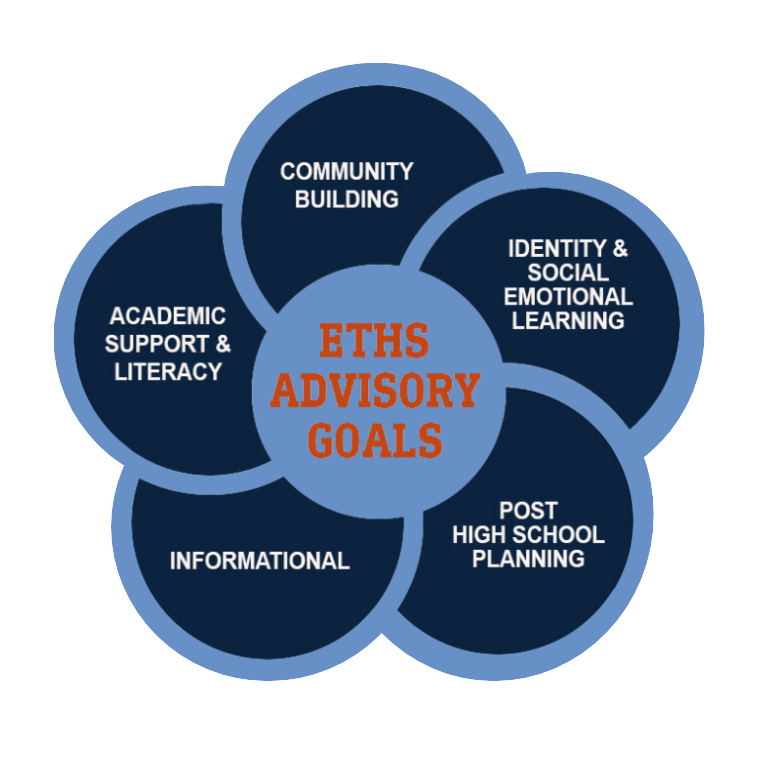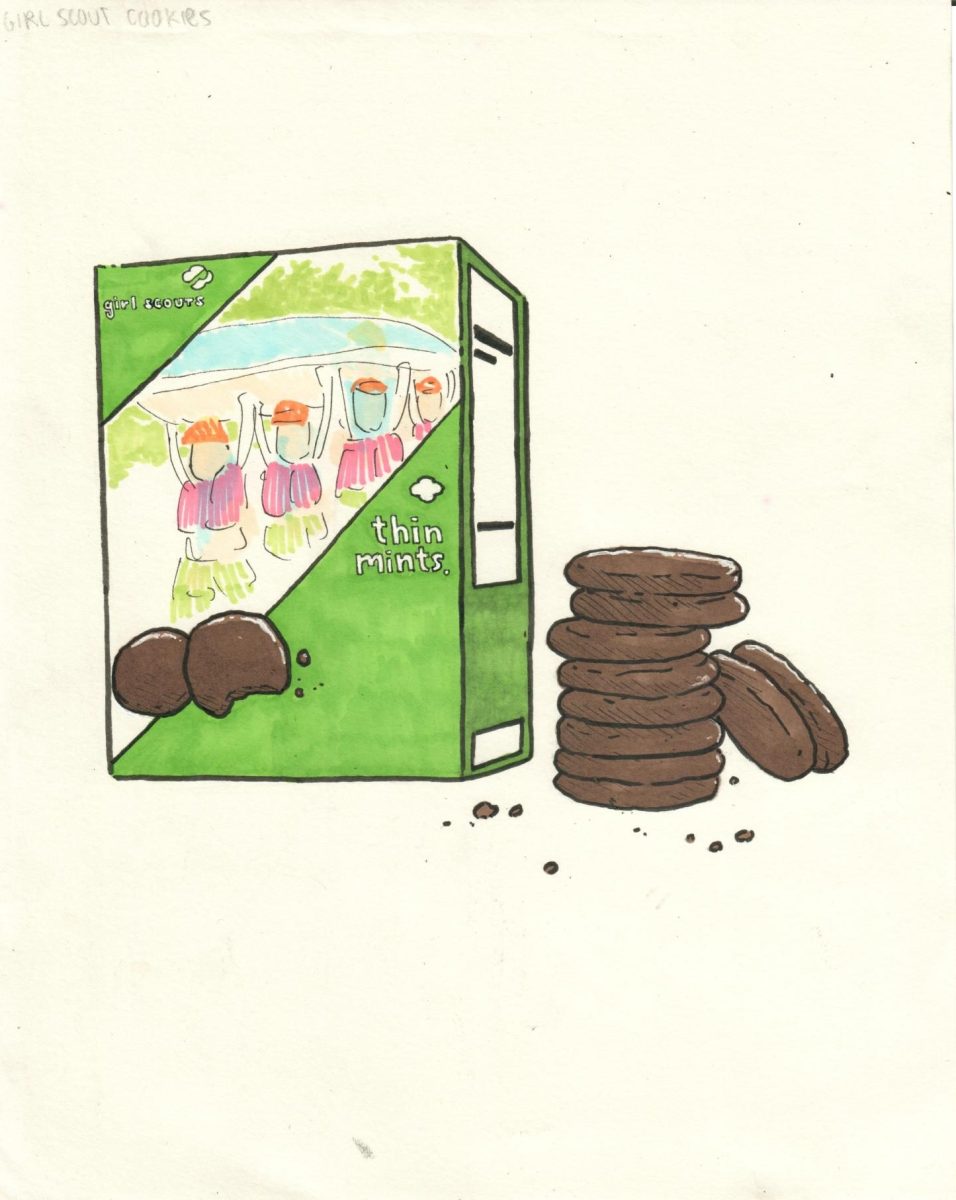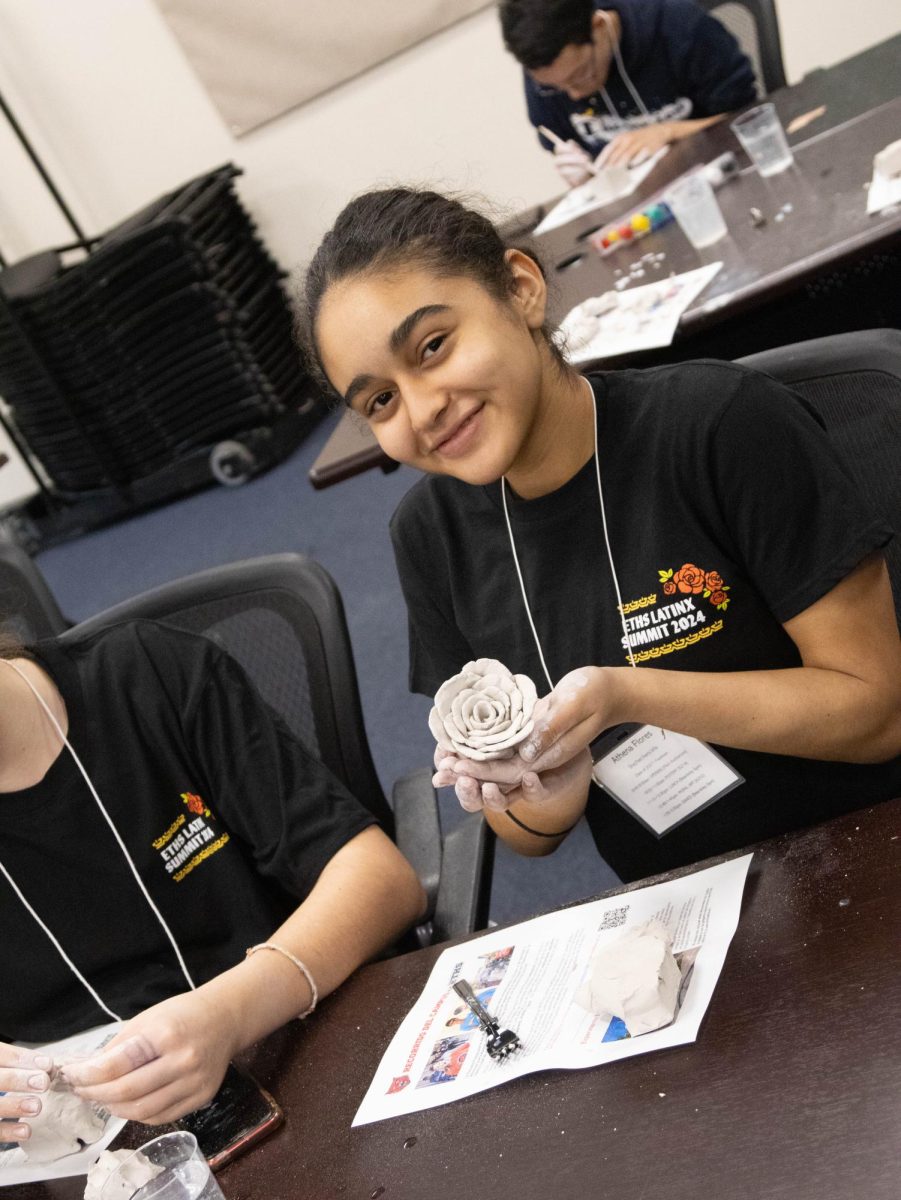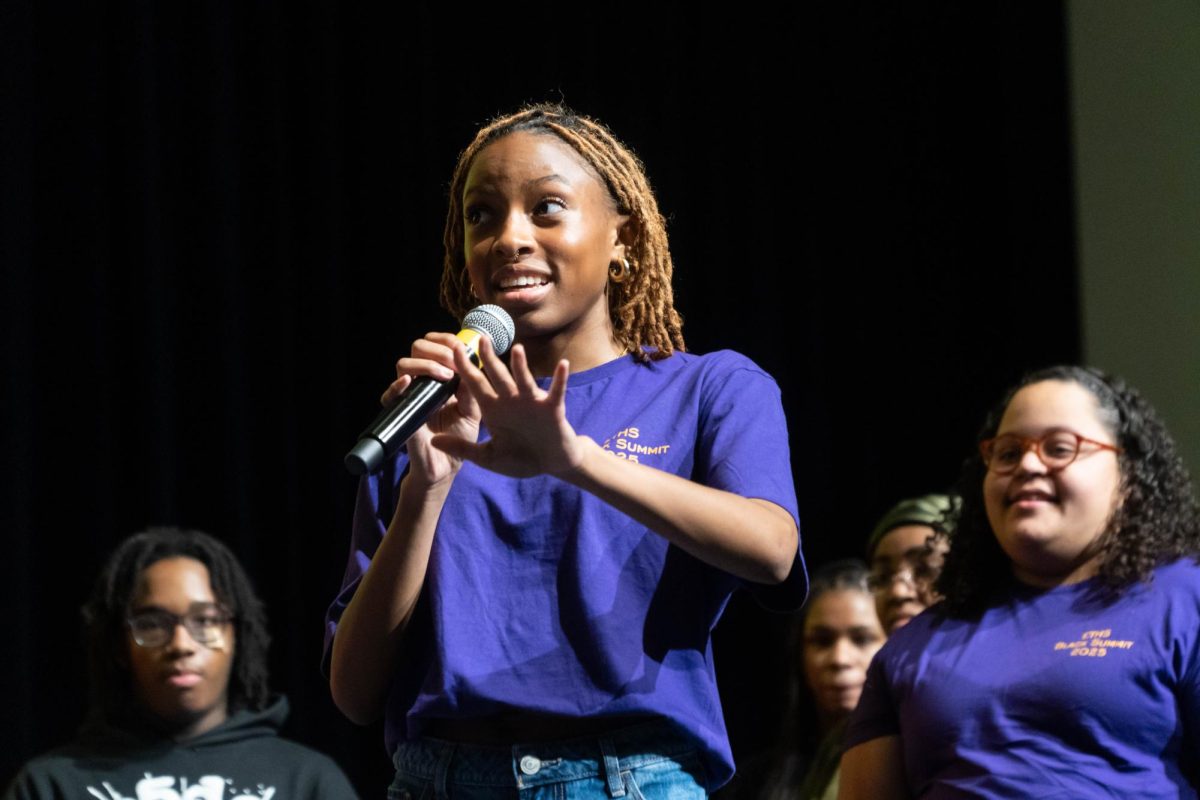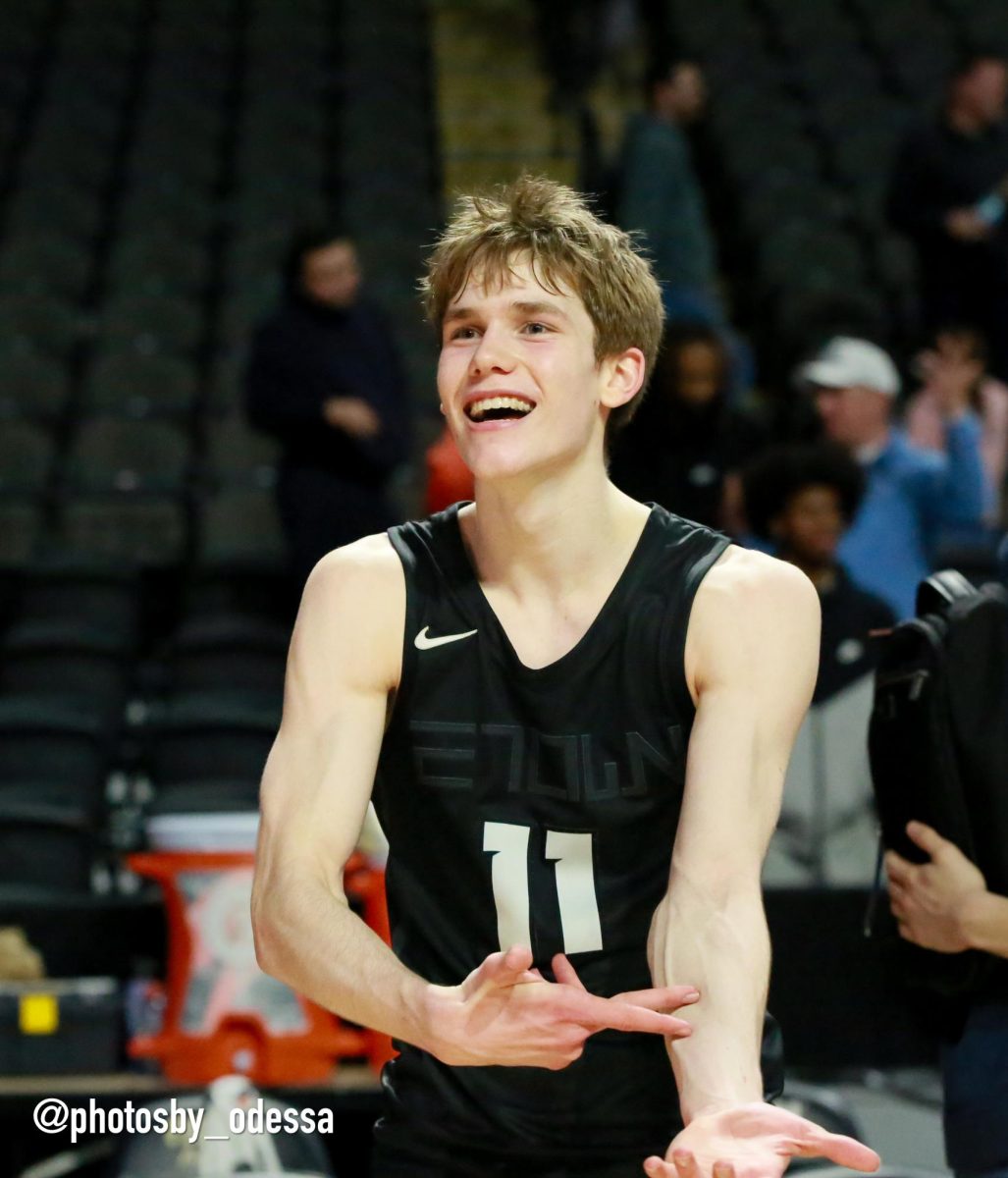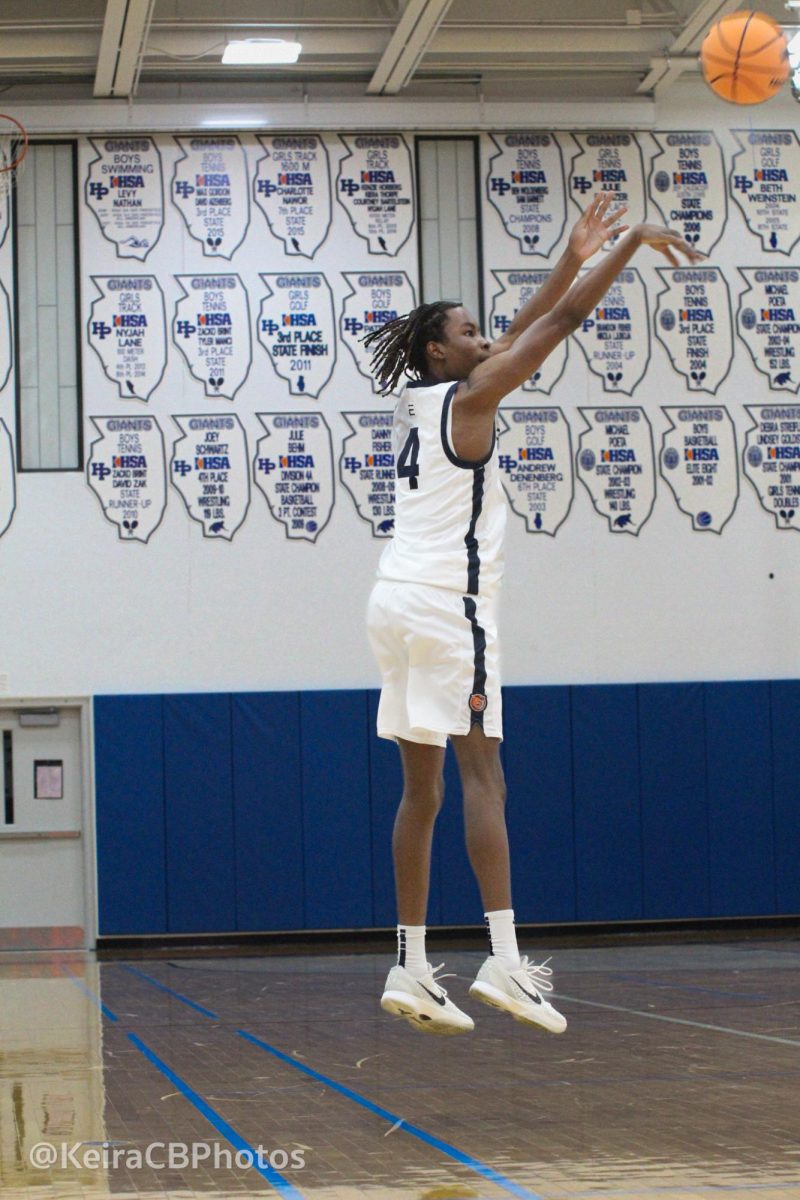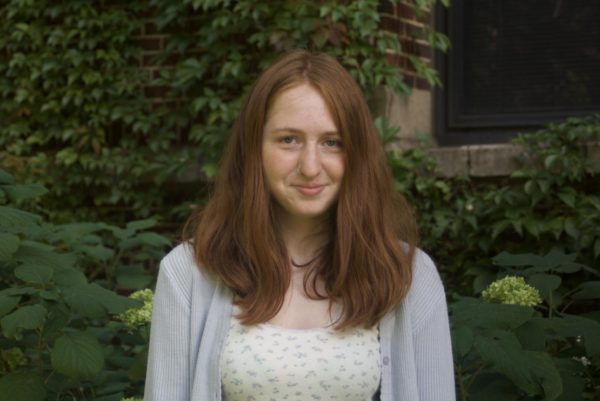Thirteen years ago, ETHS introduced the first iteration of its now comprehensive advisory program—a freshman advisory study hall. As a newly-appointed committee began to explore what it could look like to implement an advisory period for all grade levels, their conversations eventually reached a standstill, lacking the infrastructure necessary to make the transition feasible.
More than a decade later, in May of 2023, Dr. Marcus Campbell, nearing the end of his first year as ETHS’ superintendent, reopened the conversation when forming a new advisory committee headed by New Student Transition Coordinator Alicia Hart and Tech Integration Specialist Mina Marien.
“Dr. Campbell reached out to us to say, ‘Let’s explore doing something that’s more robust,’” Hart said. “With the biggest goal being expanding and enhancing what we know is working for our current advisory, and take advantage of those things to make it more accessible.”
As of now, a formal advisory curriculum is disbursed to students up until their senior year, utilizing a full block period for FASH (Freshman Advisory Study Hall) and SASH (Sophomore Advisory Study Hall), while transitioning to asynchronous learning junior year. Advisory Coordinator and AVID teacher Vaishaali Patel explains that the main objective of the freshman program is for students to gain an understanding of ETHS through small, counselor-specific classes.
“The freshman curriculum is mostly introducing ETHS, and then lots of supports and resources,” Patel said. “That’s really where the bulk of where the idea of the importance of advisory comes from—making sure that the students feel well equipped to navigate high school and then navigate all the pieces in it.”
Going into sophomore year, the curriculum focuses much more heavily on post-high school planning and developing the skills necessary to succeed both in and out of the building. Unlike FASH, students complete weekly assignments independently on their own time, utilizing the block period primarily as a study hall.
“The model is with FASH, it’s a teacher, it’s counselor specific, and it’s very supportive,” Hart said. “Then sophomore year, everybody’s mixed up. It’s not by counselor. They’re in a large study hall, and they get a really great curriculum. It lacks that personalization that the freshman year has.”
SASH was first implemented during the 2021-22 school year as a means to engage the sophomore class that had just spent their freshman year in remote learning. Since then, the course has been expanded and revised to fit the growing needs of students.

“Even from three years ago, it was a completely different experience. We’re constantly revising and trying to make it the best that it can be for students,” Patel said.
When going through this revision process, Patel found that similar programming could be beneficial for upperclassmen, prompting the school to introduce Junior Advisory at the beginning of the current school year.
“Based on feedback from some of last year’s juniors that, after having two years of advisory curriculum [wanted resources for] college and post high school planning. They thought it would have been nice to have some more reminders; it’s just a [Google Classroom] to put reminders and some direction for students,” Patel said.
Now, Patel is working alongside Hart and Marien to adapt pieces of FASH, SASH and Junior Advisory into a program set to go live during the 2025-26 school year.
For Campbell, the prospect of a standardized advisory was enticing in that it offered an opportunity to communicate important information more efficiently.
“We’re trying to figure out how we deliver programming to what we call tier one, where everybody gets the same information. How do we do that with the whole school?” Campbell said. “There’s a lot of programming we want to get to students like post secondary opportunities, work based learning opportunities, internships, information about fentanyl poisoning; stuff that’s inspirational, informational, and [relating to] safety. How do we get that to students without just sending emails all the time?”
Hart notes that this method of information sharing is especially essential for engaging students with IEPs and learning disabilities.
“How do we make sure all of our students, or students who have an IEP and are in a learning strategies class are only getting it in an insulated environment of other students with an IEP, are getting this information, and how could we have more robust curricular conversations across student groups?” Hart said.
While this isn’t the first time the school has looked into developing a more robust advisory program, the effects of COVID-19 demonstrated just how important these spaces are for cultivating a sense of belonging among the student body.

“Everyone’s been through a lot in the last four years, and thinking about what success means and what humans need to be successful, I think that scope is a little bit wider,” Marien said. “Having gone through COVID and understanding that, these things are all connected, right; if you don’t feel like you belong, you can’t really be academically successful. There are pieces that everyone’s a little bit more open to recognizing, because we’ve all been through something really hard.”
“We recognize that in our students, we recognize that in each other and wanting to have something that gives us a space to really respond to those needs, and not just COVID needs, but the needs that come with living in this world that we are.”
Since its inception last May, the advisory committee has grown to more than 60 members with representation from all academic departments, as well as counselors and other staff members. To recruit those members, an email was sent out to staff, inviting them to express their interest and share their preliminary thoughts.
Initially, over the summer, the conversations in the committee focused on big-picture thinking and goal-setting.
“We were all on Zoom, and people were just collecting research, folks were bringing in stuff that they had experience with or other schools, other connections, other stuff that they did in graduate work,” Patel said. “All kinds of things coming up and being brought, so that’s kind of where we started right and then we started narrowing down a little and picking what was the most important.”
In addition to creating equitable spaces to streamline information, the committee also found that their interests aligned with ETHS’ strategic priorities of social-emotional learning, racial equity, post-high school planning and literacy.
“We basically have those same goals except in addition, this informative piece—announcements, what’s going on in the building, events and things like that,” Marien said. “So, we found that the things we want to instruct on more explicitly across the school really lines up with the things this was trying to do anyway. So, we felt really good about that.”
While still honing in on specifics, there are a few key elements of the program that the committee is dedicated to bringing to fruition. Looping, a term in education referring to when a student remains with the same teacher and cohort of students for multiple years, is one of those elements.
“Our committee really focused on research, best practices, and what a really good advisory program looks like without the constraints of money or staffing—anything idealized. And when we looked at that, one of the things that came up is this idea of looping,” Marien said. “There aren’t a lot of classes at ETHS that deliberately loop, sometimes you might get the same teacher like in your world language, but the studies really show how important that is to build that relationship with that adult, and then with that cohort of students, so one of the top priorities that our committee came up with is how to do that.”
The benefits of looping have been demonstrated both through outside research and even a select number of courses at ETHS. AVID (Advancement Via Individual Determination), a class open by invitation only to the academic middle, prepares students for rigorous honors level courses with looping as one of its strategies for success.
“These best practices come from larger research, and then also looking at things that we’ve already got in place in the school. So, within AVID, we do loop, and that’s one of the feedbacks from students over the years and staff is that that is a really important component of that program,” Patel said. “So, the research isn’t just broad research from the larger educational world. It’s also looking at, ‘What are we doing at the school that’s working, and how can we spread the wealth to more students, and have all students benefit from that type of model?’”

By incorporating looping into the program, each advisor is able to take the time to really get to know their students, allowing for an added level of clarity and trust.
“[Looping allows for a] space where students feel like they have an adult who knows them personally and can share information that relates to them. They would be able to say, ‘I saw this announcement about this club, or there’s some scholarship that’s available based off of something you have a particular interest in.’ Just really making that personal connection,” Hart said.
That personal connection also creates an environment in which students can celebrate their milestones together.
“Think of how fun it is that you got to celebrate your birthday in your homeroom when you were younger. We don’t necessarily get that feeling because we’re such a large school, and I think it provides those little joys that come with being around people you like and feel like support you,” Marien said.
Before working at ETHS, chemistry teacher Tina Lulla served as an advisor for students at a charter school in Chicago. It was her experience with looping specifically that prompted her to join the advisory committee.
“At my previous school, when I worked in the city, I had had a really, really positive advisory experience. We had an advisory program where we looped with our students for four years, and at that school, it was much smaller than ETHS, so we really had an opportunity to get to know those students really well over the four years, and almost served as their counselor,” Lulla said. “It was that idea of staying with students for four years and being able to loop with them and get to know them over their whole high school career that was really, really rewarding as a teacher, and I still have connections with many of those students now.”
But since the beginning, feasibility has been the school’s biggest concern. Without a workable schedule or appropriate staffing, no program—let alone one that incorporates looping—would be possible.
“In what we have right now in terms of the schedule, with the way the block is, you can’t really do looping,” Marien said.
One solution to this challenge is to have advisory happen at the same time each day for every student. In doing so, no scheduling conflicts would arise for students interested in particular courses, and teachers would be able to take on the role of an advisor without it impacting their class times.
“The biggest piece that we’re looking at is trying to find a time in the day where advisories happen for all students. That’s the essential component,” Hart said. “And that’s how you can allow for looping because then every student has advisory at that time, and every staff member has advisory, and then we don’t have any conflicts. So, that’s one of the goals—to see if we can find how to make that work.”
Many of ETHS’ neighboring high schools already have in place a schedule that fits the committee’s vision. For instance, New Trier’s singular advisory period occurs during the first 25 minutes of school, while Niles Township’s is a ten minute span nestled between third and fourth period.
Over the coming months, the committee will transition from focusing on logistical planning to building out their robust curriculum and seeking feedback from different stakeholders. To make this a reality, the group has divided into three subcommittees—curriculum, staff professional development and community engagement.
“So as we move past the ‘let’s get the logistics figured out phase,’ we will have a group of people who are from diverse backgrounds, looking at what’s already happening in SASH, FASH, and junior advisory, and what we need to add,” Marien said. “One area is executive functioning; how can we help students be really successful in the time that they have? How can we make sure they’re using that time we’re finding the supports they need to really get them to navigate these things and maybe make their whole day better just by having that.”
In particular, now that they feel confident in the program moving forward, Hart and Marien hope to see students take an active role in the planning process.
“I want to talk about advisory nonstop, so I don’t want any student to think we’ve already figured it out, and it doesn’t sound like what they think they need,” Hart said. “Tell us what we need; we’re literally designing it for students, and so now that we’re at this tipping point of hopefully going to ‘Alright, it’s happening,’ we really need students in order to help make it its best version, even if it’s a student who won’t be still be there. They can look back and be like, ‘That’s part of my legacy. I helped make that happen.’”
Another focus of the committee’s during the upcoming school year is to select staff members to fulfill the advisor roles.
“Right now, a lot of [FASH advisors are chosen because] they have this free period when kids need an advisory,” Hart said. “In the future, it would be all at the same time, and so anyone who really is passionate about being an advisor and who wants to spend the time and professional development and be part of that committed group would be able to do that. And we want to work with students to figure out how we select good advisors.”
However, the committee is confident in their ability to find a team of enthusiastic teachers.
“Sometimes FASH teachers will even say that’s their favorite part of their day, so there are definitely a good number of teachers,” Patel said.
Ultimately, as the current school year comes to an end and the committee moves onto its next phase of operations, Hart hopes for one thing above all—to make students feel a sense of belonging.
“[Our new logo says] ‘ETHS advisory where students belong, and we have a deep commitment of this being a space where students really feel connected to. So, if you had a terrible day, you actually want to go to school and find your advisor and talk about it, or find your advisory class and get support and have that not be something where you’re going to school, and you’ll have to put on a good face and do work all day,” Hart said.
“There’s a place where you can be yourself and your whole self and get support and get care, and then also be able to offer that to your peers and have a real sense of community.”


